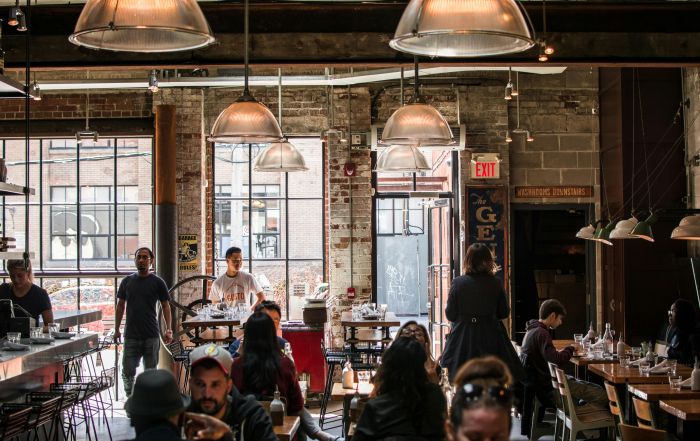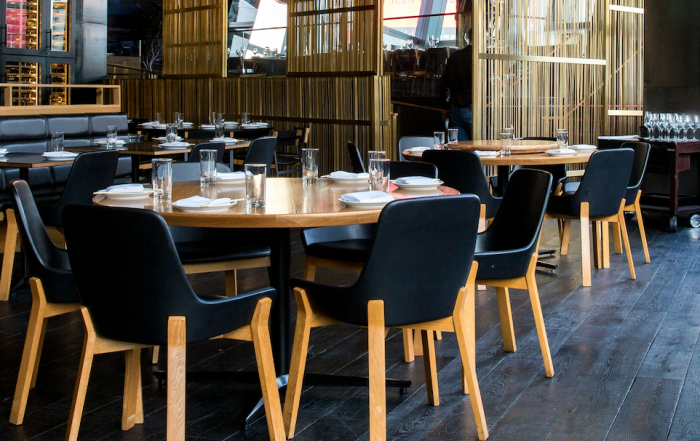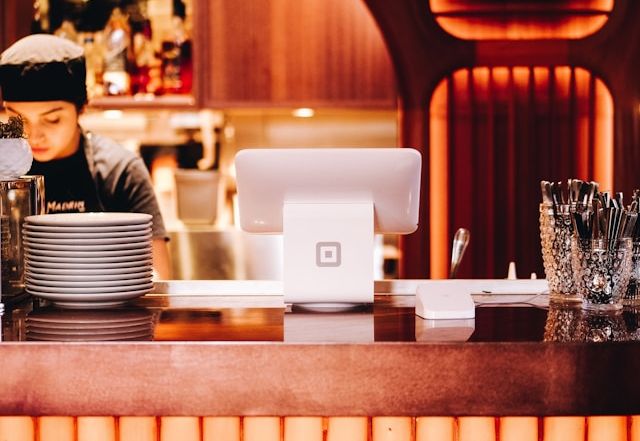10 ways the pandemic has impacted food safety

The impact of COVID-19 on the food service industry has been profound. Disruptions affected farms, processors, distributors, retailers, restaurants, and consumers. At the beginning, the stay-at-home orders put in place by local governments meant food service establishments had to stop operating. Many farms were initially forced to dump large portions of the food they produced and food processors experienced large losses of manufactured products. In addition, food service workers were initially exposed to the infection, then faced further economic problems when the restaurant industry closed. Despite the huge impact the pandemic had on the global economy and supply chains, there are some positive changes that have happened as a result of the pandemic. Here’s 10 facts we have learned about food safety from the pandemic.
1. It all started with a bat
Scientists understand that the virus started with a bat in China. Exactly how the bat passed on the infection is still unclear, yet with more than 95 million people being infected across the world, it’s been the source of much scrutiny. The original hypothesis was that the virus originated in the Wuhan Fish Market, however scientists have rebuffed that theory.
2. The virus particles are infectious in the air
Experts originally thought that the virus was transmitted through large drops of mucus and saliva, emitted when people sneeze or cough. However we now know that the virus is emitted in droplet sizes with some particles small enough to persist in the air. Professor Wendy Barclay said: “The way the virus gets out of one person and into another is through droplets. We emit them all the time. If you think about just walking down the road on a cold day you can see this mist just walking along. That’s the respiratory droplets that you’re emitting all the time.”
3. Masks helped us continue
Early on we were alerted to the importance of wearing masks as they could avoid infectious droplets being passed from person to person. However, a significant shortage of PPE equipment meant that a number of workplaces still weren’t providing masks to their employees. A survey by the Restaurant Opportunities Center (ROC) showed that when the pandemic hit thirty-four percent of respondents reported that they did not receive PPE (e.g, masks, gloves, face shields) at their workplace.
4. The food supply chain was deeply impacted
The pandemic highlighted how fragile our food supply chain is. Crops lay rotting in the fields as a shortage of staff to work on the farms. Where produce did get harvested, border controls and air freight restrictions made international transport of fresh goods extremely difficult – and expensive. In Canada, for example, poultry farmers collectively acted to reduce their output by 12.6%3. Farmers in Africa have struggled to get hold of seeds, while in the US huge numbers of livestock were culled because of difficulty getting to abattoirs, and milk was poured down the drain. All this put extra pressure on the food service industry to source fresh produce and to ensure food was kept safe for as long as possible.

5. More people ate (safely) at home after the pandemic
As people were locked in their homes, cooking became far more popular, with companies such as Amazon Fresh able to capitalize on demands for last minute grocery shopping. A study commissioned by the Food Standards Agency in the UK found that many households experienced changes to their patterns of food behavior, including a rise in home-cooking, food sharing and increased attention on diet and safe food preparation.
6. It is estimated that around 159,000 restaurants closed directly after the pandemic
According to the Washington Post (which uses data from the Business Employment Dynamics), the total number of closures in 2020 was 159,000. In the second quarter of 2020 alone, as government restrictions kicked into high gear, BED statistics indicate that more than 72,500 food and drink establishments closed, more than three times the quarterly average of about 20,300. Whilst this may not have impacted food safety specifically, it’s impact on the food service industry has been felt for years afterwards.
7. Restaurant workers were profoundly impacted by the pandemic
Nearly 60 percent of workers surveyed by the Restaurant Opportunities Center (ROC) reported being concerned about themselves or their loved ones contracting COVID-19 due to their exposure at work. They were also concerned about general measures of safeness that were put in place. Nearly a third of all workers shared that they had experienced the death of family or friends due to COVID-19 or suspected COVID-19. This number was even more alarming when looking at the responses of Black restaurant workers—over half experienced a death among their family or friends.
8. Technology made a real difference
Technology solutions were embraced in restaurants like never before. From digital ordering through to robot servers, the industry was quick to take up a range of tech solutions to continue operating. Hans Mogeson from Boathouse Asian Eatery explained the use of robots “We have been using Pudu robots. We have four in total and they have been great. They can bring food to the customer,” this made the whole experience safe as there is less chance of contamination.
9. Consumers are more concerned about food safety
Now, more than ever, consumers have an understanding of food safety. They expect their food to be prepared safely and in safe environments. In response, the industry has embraced food safety solutions, such as Phenium’s AI system, which can help eliminate food safety incidents and outbreaks in the future. In the past food safety procedures have been tracked using antiquated pen and paper systems, but with the implementation of tech solutions, this can all be eliminated. An automated food safety system can checks all your food storage, handling and cleaning procedures.
10. Food safety is moving faster than ever before
From tech-enabled traceability and smarter tools to retail modernization and food safety culture, there are many updates in the world of food safety that can help bring more knowledge and understanding to consumers. Research from the Food Value Equation Survey by Deloitte Consulting LLP suggests that consumers want toxin-free food as well as more transparency from food producers and retailers about those and other food safety issues. As food service providers we can adopt many of these new technologies to bring a better experience to the consumer.


